Archive
Posts Tagged ‘trust across america’
Trust ResearchAugust 12th, 2018
 Why should Boards and their CEOs focus on building stakeholder trust? Our FACTS® Framework calculates the trustworthiness of US based public companies, and we have issued an annual report of our findings since 2012.
Why should Boards and their CEOs focus on building stakeholder trust? Our FACTS® Framework calculates the trustworthiness of US based public companies, and we have issued an annual report of our findings since 2012.
On average, the “Top 10″ most trustworthy public companies have outperformed the S&P 500 by over 30% annually.
That’s why.
Barbara Brooks Kimmel is the CEO and Cofounder of Trust Across America-Trust Around the World whose mission is to help organizations build trust. A former consultant to McKinsey and many Fortune 500 CEOs and their firms, Barbara also runs the world’s largest global Trust Alliance, and is the editor of the award winning TRUST INC. book series and TRUST! Magazine. In 2012 she was named one of “25 Women who are Changing the World” by Good Business International, and in 2017 she became a Fellow of the Governance & Accountability Institute. Barbara holds a BA in International Affairs and an MBA. For more information contact barbara@trustacrossamerica.com
Copyright (c) 2018, Next Decade, Inc.
Barbara Brooks Kimmel, barbara kimmel, Board of Directors, CEO, FACTS(R), trust across america
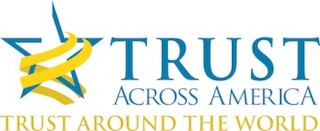
By Barbara Brooks Kimmel, CEO & Co-founder Trust Across America
In the short-term “low trust” public companies can be very profitable. Corporate executives who “legally” cheat, steal, avoiding paying taxes, and stay just to the “right” of compliance may produce the profits that both their “old school” Board and short-term oriented shareholders crave, but these “business as usual” trust violations are not conducive to long-term business success. A growing number of companies are replacing the “stuck in the 80s leadership model” with proactive business executives who acknowledge that long-term success is built by embracing trust as both a strategic advantage and intentional business strategy. This translates to practicing “trust” on a daily basis by building a trustworthy and responsible corporate culture, treating customers and suppliers “right”, by having superior products, great service, a well-configured Board, low employee turnover, and a high degree of innovation.
Now in its 9th year, our proprietary FACTS® Framework measures the trust “worthiness” of America’s largest public companies (over 2000). The following are some of the “fast facts” drawn from our larger study.
Chart #1
Since 2012 Trust Across America has selected and publicly published an annual list of “Top Ten” Most Trustworthy Public Companies. Had you invested in those 10 companies on the day of publication, your portfolio would have significantly outperformed the S&P 500.
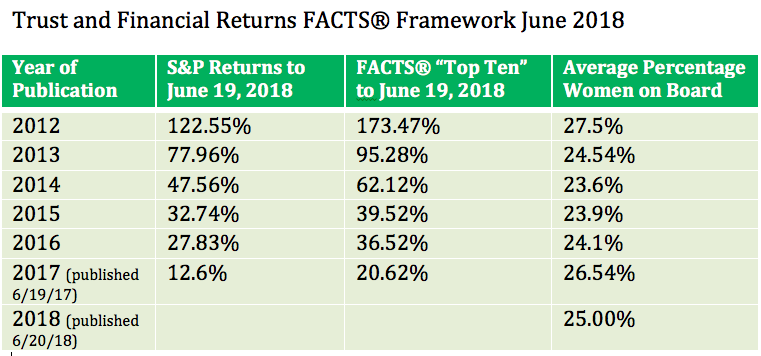
Chart #2
FACTS data can be sorted by sector and the following chart represents the sector rankings for the Russell 1000 for 2018. Please keep in mind that the Framework uses a broad 16-sector model provided by Zacks Investment Research. Others like S&P and Morningstar sometimes place companies in different sectors. For example, Zacks financial sector includes banks, insurance companies, REITS and brokerage firms, to name just a few. And it’s also important to remember that industry is NOT destiny.
The data can also rank companies within sectors, by market cap and headquarter location, to name just a few. We can also perform company comparisons.
Sector Rankings
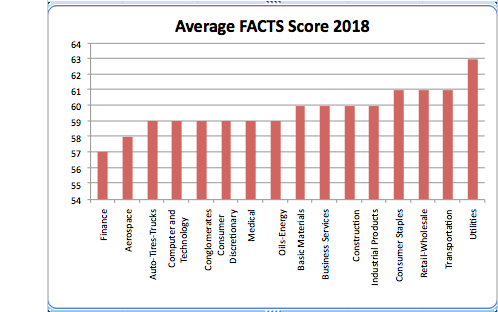
Correlation Studies:
Trust Across America continues to run a series of ongoing correlation studies with other organizations and these are a few of our findings:
- High correlation between our FACTS rankings and percentage of women on boards as reported by Catalyst.
- High correlation between our FACTS rankings and Governance & Accountability Institute’s companies that voluntarily report on sustainability.
- Low correlation between our FACTS rankings, Great Places to Work and Forbes Annual Ratings of Most Trustworthy Public Companies. (Forbes data providers employ a narrower “measure” of trust “worthiness” to compile their rankings.)
These studies and many others, confirm that the best companies are more responsible, and they dedicate the necessary resources for continuous improvement.
Our FACTS Framework and rankings are being licensed in a variety of formats. Read more about the Framework at this link.
Email Barbara@trustacrossamerica.com for more information.
Barbara Kimmel, CEO & Co-founder Trust Across America
Copyright© 2018, Next Decade, Inc.
Barbara Brooks Kimmel, Board of Directors, C-Suite, CEO, corporate reputation, culture, FACTS(R), leadership, organizational trust, trust across america, Trust Inc. Strategies for Building Your Company's Most Valuable Asset
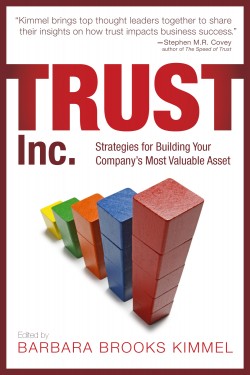
Papa John’s is the latest to call for trust “reconstruction” from the inside out. A quick review of recent news headlines also mentions the EPA after Pruitt, Michigan State’s new athletic director, the Charlottesville police department, Samsung, and Wells Fargo, among others, all calling for trust rebuilding.
At first glance, the obvious recipients of that “first” phone call might be: PR firms and ad agencies, crisis management firms, risk experts, monitors or watchdogs, lawyers or compliance consultants. Yet every one of those choices will result in a “Band-Aid” fix, at best.
For an organization to rebuild trust, the first decision is not who gets the phone call, but who makes it. That first call must originate from the top, and be made to a professional firm with expertise in organizational trust. When that call is delegated to communications, legal or compliance, the chances of obtaining a long-term desired outcome are greatly reduced.
Trust building (and rebuilding) is an intentional holistic exercise. It can’t be pushed down the chain of command and it can only be fixed by the “right” people. Trust can’t be rebuilt with a press conference or an ad campaign, and it does take time.
These 12 Principles called TAP, were developed over the course of a year by a global group of ethics and trust professionals who comprise our Trust Alliance. They are currently available in 14 languages as free PDF downloads and serve as a great starting place and a clear roadmap to building and rebuilding trust. A variety of complimentary tools are also available on our website at trustacrossamerica.com and our Trust Alliance members may also be in a position to help.
Barbara Brooks Kimmel is the CEO and Cofounder of Trust Across America-Trust Around the World whose mission is to help organizations build trust. A former consultant to McKinsey and many Fortune 500 CEOs and their firms, Barbara also runs the world’s largest global Trust Alliance, and is the editor of the award winning TRUST INC. book series and TRUST! Magazine. In 2012 she was named one of “25 Women who are Changing the World” by Good Business International, and in 2017 she became a Fellow of the Governance & Accountability Institute. Barbara holds a BA in International Affairs and an MBA. For more information contact barbara@trustacrossamerica.com
Copyright (c) 2018, Next Decade, Inc.
Barbara Brooks Kimmel, corporate reputation, leadership, Michigan State, organizational trust, Papa John's, trust across america, Trust Inc. Strategies for Building Your Company's Most Valuable Asset, Wells Fargo
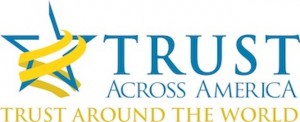
Elevating organizational trust becomes simple once leadership acknowledges the business case. That case has been made repeatedly by many organizations, including ours. Last month we introduced our TAP Principles through the Million Taps Campaign. Each of the 12 statements is designed to open the trust discussion among teams of any size in any organization. (TAP is currently available in 5 languages, with more being added.)
And if you are a leader who wants to build trust into your organization’s DNA, it all begins (and ends) with you. How many of these boxes can you check?
Start with an assessment of yourself:
- Are you trustworthy?
- Do you possess integrity, character and values?
- Do you share those values with your family?
- Do you instill them in your children?
- Do you take your personal values to work?
Perform an organizational trust audit:
- (More information on how to do that can be found in the spring issue of TRUST! Magazine.
- Is it reflected in your statement of values and corporate credo?
- How do you practice your organizational values?
- How well do you communicate them?
- Will they outlive your tenure?
Consider your internal stakeholders:
- Do you discuss trust daily?
- Do you encourage feedback?
- Are you working to break down silos and create unified strategies?
- Do you share a consistent vision?
- Do you model openness and vulnerability?
- Do you use transparent decision-making?
- Do you ask for input?
- Do you share every “Wow” moment in your organization?
- Do you communicate well?
Consider your external stakeholders:
- Have you shared your vision and values in building a trustworthy organization?
- Have you identified the outcome(s) you are seeking?
- Have you defined your intentions for each of our stakeholder groups?
- Have you made promises that you will keep?
- Have you determined the steps you will take to fulfill these promises?
Elevating organizational trust is not difficult. It begins with awareness, acknowledgement of the long-term benefits and a daily commitment to do so.
Barbara Brooks Kimmel is the CEO and Cofounder of Trust Across America-Trust Around the World whose mission is to help organizations build trust. A former consultant to McKinsey and many Fortune 500 CEOs and their firms, Barbara also runs the world’s largest global Trust Alliance, and is the editor of the award winning TRUST INC. book series and TRUST! Magazine. In 2012 she was named one of “25 Women who are Changing the World” by Good Business International, and in 2017 she became a Fellow of the Governance & Accountability Institute. Barbara holds a BA in International Affairs and an MBA.
Copyright (c) 2018, Next Decade, Inc.
Barbara Brooks Kimmel, barbara kimmel, CEO, corporate reputation, culture, FACTS(R), integrity, leadership, organizational trust, trust across america, trust in business, Trust Inc. Strategies for Building Your Company's Most Valuable Asset
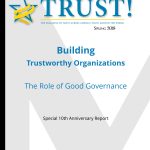 Last week the spring issue of TRUST! Magazine was published by Trust Across America-Trust Around the World (TAA-TAW). This special 10th anniversary issue, coauthored with Bob Vanourek, a former corporate CEO and cofounder of Triple Crown Leadership is called Building Trustworthy Organizations: The Role of Good Governance. Having polled almost two dozen lead directors, Board members and governance experts, Bob and I asked three survey questions. The first two were:
Last week the spring issue of TRUST! Magazine was published by Trust Across America-Trust Around the World (TAA-TAW). This special 10th anniversary issue, coauthored with Bob Vanourek, a former corporate CEO and cofounder of Triple Crown Leadership is called Building Trustworthy Organizations: The Role of Good Governance. Having polled almost two dozen lead directors, Board members and governance experts, Bob and I asked three survey questions. The first two were:
What does/did the term “good corporate governance” mean to you?
What are/were some of the key governance practices you find/found most useful to good corporate governance?
The third question was:
What are some suggestions you have for improved corporate governance in the future?
While the magazine contains literally dozens of responses and ideas, the following are ten recommendations regarding the Board in general:
- “Understanding and practicing good governance is not a skill set listed when looking for candidates to nominate for election to a board—it is important that good education is provided for new and current directors on the tenets of good governance which are publicized by the company.”
- “Good governance is enhanced with high levels of trust among board members, good communications between directors and senior management, a solid internal auditing function, and a reliance on competent outside counsel.”
- “Greater gender, ethnic, age and geographic diversity.”
- “Define ‘cognitive diversity’ and integrate it into the board search process.”
- “Fewer sitting CEOs as directors and limitations on how many boards their own CEO may sit on.”
- “A board that is deeply engaged with each other, the CEO, and leadership team.”
- “Yearly review by the board of recommendations from the various stakeholders for changes and additions to governance policies and procedures.”
- “Closer attention to ESG (Environmental, Social, Governance). In 2017, ExxonMobil faced a 62 per cent proxy vote for stronger climate change disclosure. Expect ESG to become a standard proxy concern for major shareholder groups.”
- “Ensuring a constructive, trustworthy tone at the top among board members and senior management, personally modeling appropriate behavior.”
- “Strive to lead in the spirit of trust to make things better now and for the future. Their goal is to leave the organization better than when they found it.”
Building trustworthy organizations is, indeed, an essential element of good corporate governance. As one of our wise respondents said of board members,
“As stewards, they strive to lead in the spirit of trust
to make things better now and for the future.
Their goal is to leave the organization
better than when they found it.”
Last week we also introduced TAP, our Trust Alliance Principles. They are available (in 5 languages) by tapping the button on our home page or to the right of this blog.
We hope these two new resources will help organizations build trust. That has remained the mission of TAA-TAW since it’s inception 10 years ago.
Barbara Brooks Kimmel is the CEO and Cofounder of Trust Across America-Trust Around the World whose mission is to help organizations build trust. A former consultant to McKinsey & Company, she also runs the world’s largest global Trust Alliance and is the editor of the award- winning TRUST INC. book series. In 2017 she was named a Fellow of the Governance & Accountability Institute, and in 2012 she was recognized as one of “25 Women who are Changing the World” by Good Business International. She holds a BA in International Affairs from Lafayette College and an MBA from Baruch at the City University of NY.
For more information visit our website at www.trustacrossamerica.com
or contact barbara@trustacrossamerica.com
Follow us on Twitter @BarbaraKimmel and @TapIntoTrust
You may also join our Constant Contact mailing list for updates on our progress.
Copyright (c) 2018, Next Decade, Inc.
Barbara Brooks Kimmel, barbara kimmel, Board of Directors, C-Suite, CEO, leadership, organizational trust, trust across america, Trust Inc. Strategies for Building Your Company's Most Valuable Asset
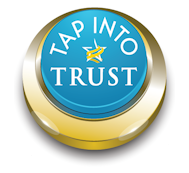 Trust Across America-Trust Around the World continues to reach new milestones in its mission to help organizations build trust.
Trust Across America-Trust Around the World continues to reach new milestones in its mission to help organizations build trust.
Last week we:
- Began our 10th anniversary celebration
- Released the spring issue of TRUST! Magazine whose title is Building Trustworthy Organizations: The Role of Good Governance
- Commenced a movement called TAP INTO TRUST, a set of global Principles to help organizations of any size elevate stakeholder trust.
None of these initiatives would have been possible without collaboration. As our Trust Alliance grows, our members are working side by side to elevate trust in organizations around the world.
If you lead an organization this document will provide the framework to begin the process of elevating trust.
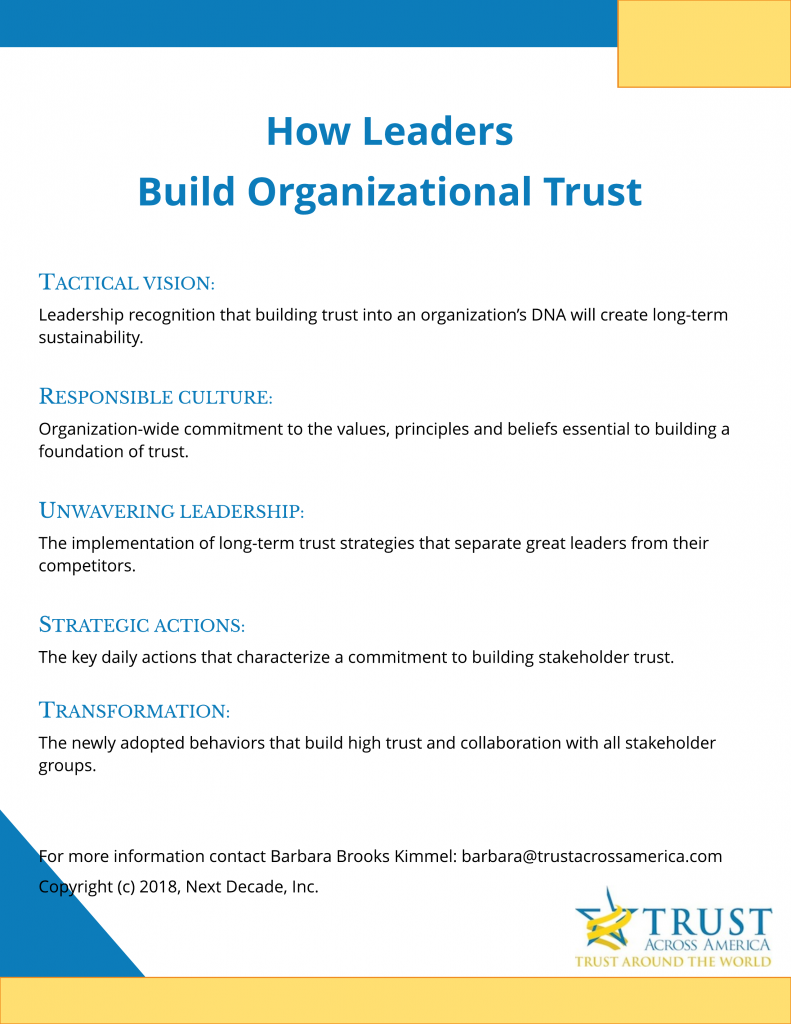
Barbara Brooks Kimmel is the CEO and Cofounder of Trust Across America-Trust Around the World whose mission is to help organizations build trust. A former consultant to McKinsey & Company, she also runs the world’s largest global Trust Alliance and is the editor of the award- winning TRUST INC. book series. In 2017 she was named a Fellow of the Governance & Accountability Institute, and in 2012 she was recognized as one of “25 Women who are Changing the World” by Good Business International. She holds a BA in International Affairs from Lafayette College and an MBA from Baruch at the City University of NY.
For more information visit our website at www.trustacrossamerica.com
or contact barbara@trustacrossamerica.com
Follow us on Twitter @BarbaraKimmel and @TapIntoTrust
You may also join our Constant Contact mailing list for updates on our progress.
Copyright (c) 2018, Next Decade, Inc.
Barbara Brooks Kimmel, barbara kimmel, CSR, culture, leadership, organizational trust, reputation, trust across america, Trust Inc. 52 Weeks of Activities & Inspirations for Building Workplace Trust, Trust Inc. Strategies for Building Your Company's Most Valuable Asset
TAP INTO TRUSTApril 18th, 2018

Organizations are being challenged to become more trustworthy. We often hear about trust in the context of rebuilding it after a crisis. But to maintain long-term, positive stakeholder relationships, leaders must make trust an intentional organizational imperative.
According to Barbara Kimmel, CEO and Cofounder of Trust Across America-Trust Around the World, “In order to effect change, trust can no longer be taken for granted. It is not a “soft skill” but rather a proactive intentional business strategy. Leaders must become trust “activists.” Those who choose to take a reactive approach are creating unnecessary enterprise risk.
How does the trust dialogue begin?
Prepared in collaboration with the Trust Alliance, the world’s largest group of trust scholars and practitioners, the Trust Alliance Principles (TAP) can be applied and practiced in any organization of any size. By adopting TAP, trust is built one person, team, project and organization at a time.
Take a look at these twelve words. They form the TAP INTO TRUST acronym. Each one of them can stand alone as a starting place to elevate trust in any size group in any organization anywhere.
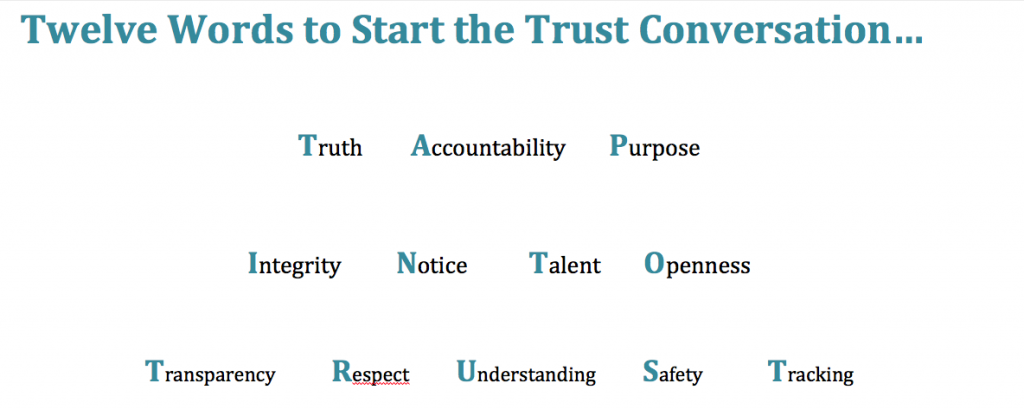
For more information on TAP and the Principle behind each word, click on the “TAP INTO TRUST” blue button to the right.
Access our press release announcing this new program at this link.
Copyright 2018 Next Decade, Inc.
Barbara Brooks Kimmel, barbara kimmel, leadership, organizational trust, trust, trust across america, trust in business, trustworthy behavior
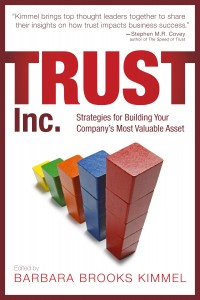
This story starts with an increase of 30% on our monthly business phone bill for no apparent reason, and with no explanation. I set aside five minutes to call the company since this particular landline exists primarily to accommodate unsolicited robocalls, and not much more. Eighteen minutes later, I was still on the call.
Why?
- First 2 minutes: A customer service telephone number is not displayed on Page 1 of the bill. (A number is buried on Page 4 as I was later told by Rep #2). Thank goodness for Google who popped the number right up on my screen.
- Next 5 minutes: Listening to a recorded message and series of prompts with no way to bypass and speak directly to a rep.
- Next 5 minutes: Speaking to Rep #1 who advised that our “special” rate had expired and she could not extend it. When I suggested that I might discontinue the service, she asked if she should connect me to the “disconnect department.” I suggested that perhaps there was an alternative and…
- Final 6 minutes: Speaking to Rep #2 in the “loyalty department” who reinstated the discount, but “just for 12 months.”
I don’t think I need to name all the ways this company is busting trust and loyalty under the heading of “customer service” but I did share a few thoughts with #2. She had a rebuttal for every suggestion yet asked me to stay on the line for a customer service survey.
It’s hard to believe that ANY organization still operates in this manner, yet so many do.
Approximately 50,000 employees currently work for this public company. In September 2014, the stock traded at $41.00. Today that same stock can be purchased for $16.75. Are you surprised? I’m not.
PS- The CEO, who has been in this role for over 25 years, recently announced his early retirement.
Barbara Brooks Kimmel is the CEO and Cofounder of Trust Across America-Trust Around the World whose mission is to help organizations build trust. A former consultant to McKinsey & Company, she also runs the world’s largest global Trust Alliance and is the editor of the award- winning TRUST INC. book series. In 2017 she was named a Fellow of the Governance & Accountability Institute, and in 2012 she was recognized as one of “25 Women who are Changing the World” by Good Business International. She holds a BA in International Affairs from Lafayette College and an MBA from Baruch at the City University of NY.
For more information visit our website at www.trustacrossamerica.com
or contact barbara@trustacrossamerica.com
Follow us on Twitter @BarbaraKimmel and @TapIntoTrust
You may also join our Constant Contact mailing list for updates on our progress.
Copyright (c) 2018, Next Decade, Inc.
Barbara Brooks Kimmel, barbara kimmel, CEO, organizational trust, trust across america

Next month Trust Across America-Trust Around the World (TAA-TAW) begins its 10th anniversary celebration. As the largest global community focused exclusively on helping organizations build trust, we plan to introduce several new programs during the coming year.
Twelve Trust Alliance members have recently been named to serve a one-year term on our inaugural Trust Council. The diverse Council members have brought their unique expertise over the past ten years in assisting TAA-TAW in the development and execution of new programs and tools to elevate organizational trust.
Presented alphabetically they are:
Bart Alexander
Art Barter
Donna Boehme
Alain Bolea
Randy Conley
Stephen M.R. Covey
Charles H. Green
Deb Krizmanich
Holly Latty-Mann
Linda Fisher Thornton
Bob Vanourek
Bob Whipple
You can read more about the Council and its members at this link.
I have enormous gratitude to this group who have individually and collectively helped make TAA-TAW what it is today. I look forward to their input and guidance as we continue to develop new tools and programs in the future to continue to help organizations build trust.
Barbara Brooks Kimmel, CEO & Cofounder
For more information contact barbara@trustacrossamerica.com
Barbara Brooks Kimmel, barbara kimmel, organizational trust, trust across america, Trust Council

Have you noticed that as LinkedIn has grown, the user focus has shifted away from relationship building to individual advertising? I don’t know about you, but sometimes I feel like I am rowing alone in a sea, and it’s not the Caribbean.
As a LinkedIn user, have you considered the benefits of first building trust with your connections? After all, LinkedIn is a great way to develop relationships that may lead to new business or collaborative opportunities down the road. Under the theory that trust is built over time and in incremental steps consider adjusting your LinkedIn “strategy” using some of the following trust-building suggestions.
Connecting
- Before accepting a new connection, take a minute to view the profile of the party who is reaching out. If there are no clear personal or professional synergies, consider passing on the invitation.
- When accepting, send a note indicating that you have spent a few minutes reviewing the profile to get to know the new connection. Ask whether the other party had a specific reason for wanting to connect.
- When sending an invitation, add a personal note showing some level of interest in the work of the potential new relationship.
Posting
- First consider the usefulness to your connections of your next post. Are you posting for your benefit or for theirs? Cheap advertising isn’t always the best marketing strategy! (Same goes for posting to groups.)
- Drop the insincere platitudes like “honored and humbled” when trumpting your minor successes. Save those words for the appropriate occasion.
- Review your past posts. How many times do you use the words “Me, my, I?”
- Don’t forget to acknowledge every comment on your post and also to reciprocate.
Networking
- Periodically review connections and send a note to those who you might want to get to know better.
- If you haven’t had any interaction beyond the first connection, never send a private message that is nothing more than an advertisement (usually an invitation to attend an event that involves paying a fee.)
- Do not use your connections to create a mailing list. Ask for permission first.
What other suggestions do you have for building trust on LinkedIn? Please leave your comments below.
Barbara Brooks Kimmel is the CEO and Cofounder of Trust Across America-Trust Around the World whose mission is to help organizations build trust. A former consultant to McKinsey & Company, she also runs the world’s largest global Trust Alliance and is the editor of the award- winning TRUST INC. book series. In 2017 she was named a Fellow of the Governance & Accountability Institute, and in 2012 she was recognized as one of “25 Women who are Changing the World” by Good Business International. She holds a BA in International Affairs from Lafayette College and an MBA from Baruch at the City University of NY.
For more information visit our website at www.trustacrossamerica.com
You may also join our Constant Contact mailing list for updates on our progress.
Copyright (c) 2018, Next Decade, Inc.
Barbara Brooks Kimmel, barbara kimmel, trust, trust across america, trustworthy behavior
 Why should Boards and their CEOs focus on building stakeholder trust? Our FACTS® Framework calculates the trustworthiness of US based public companies, and we have issued an annual report of our findings since 2012.
Why should Boards and their CEOs focus on building stakeholder trust? Our FACTS® Framework calculates the trustworthiness of US based public companies, and we have issued an annual report of our findings since 2012.










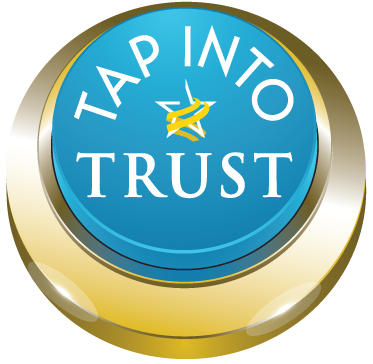
Recent Comments